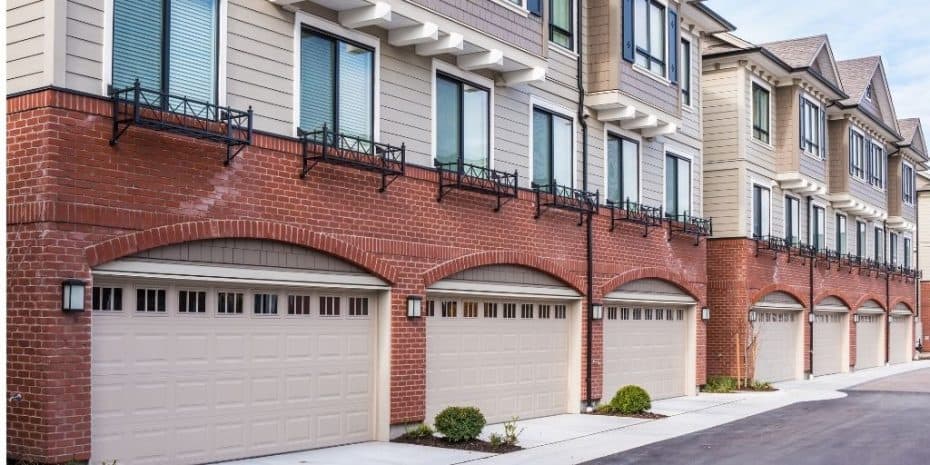What Is Buy-and-Hold Real Estate?
REtipster does not provide tax, investment, or financial advice. Always seek the help of a licensed financial professional before taking action.
Shortcuts
- Buy-and-hold is a long-term real estate investment strategy where an investor holds onto a property for at least five years to generate rental income and gain tax advantages.
- Buy-and-hold properties can provide a higher rate of return compared to other income-generating investments like bonds or annuities.
- Depreciation on rental properties can lower overall tax liability while generating passive income.
- Financing a buy-and-hold property is possible with a relatively small initial capital, amplifying potential returns compared to other types of investments.
Advantages of Buy-and-Hold Real Estate
Fix-and-flip properties are great for some real estate investors (especially those who have their own TV show), but for those who want a long-term stream of income and the tax advantages that come with it, buy-and-hold is a solid real estate investing that can make a lot of sense.
Here are a few advantages of the buy-and-hold real estate strategy:
Income generation: Most investments that generate income at regular intervals (like bonds and annuities) have very low rates of return; a “good” bond yield might be around 5%[1], whereas a good buy-and-hold real estate investment can easily double or triple that return. For example, long-term REITs (real estate investment trusts) generated about 12% in 2019[2]. But as you’ll see later, leverage makes a real estate investment even more attractive.
Equity: An investor’s equity in a property goes up as they continue paying down the mortgage, unless they have an interest-only loan. With a good buy-and-hold real estate investment, the tenant will pay enough rent each month to cover the mortgage payment, so the investor builds equity without spending their own money.
Appreciation: If an investor chooses well, their investment property will increase in value the longer you hold it. Appreciation turbocharges equity over the long term, even when considering the housing bust of 2008. Home prices have increased an average of 4% a year over the last 25 years[3], and all but a few major markets have fully recovered.
Depreciation: Rental income and expenses—including depreciation—are typically reported on Schedule E, which means depreciation lowers an investor’s overall tax liability. Buy-and-hold real estate simultaneously generates passive income and reduces the overall tax burden. No other investment can do this.
Leverage: This is where real estate shines over other investment vehicles. A real estate investor gets the returns from the entire property even though they only put down a fraction of the price to acquire it. If a buyer puts down 10% to buy a property, it’s the equivalent of 10:1 leverage. Since they can leverage a maximum return of 2:1 in the stock market[4], the amount a real estate investor can leverage can really boost your returns.
Let’s look at an example…
Cathy and Lauren each have $20,000 to invest. Cathy buys $20,000 worth of index funds, but Lauren uses her $20,000 as a down payment on a $200,000 rental property. Both investments increase by 10% in value.
Cathy now has $22,000 in her account; her initial $20,000 generated a 10% return. Lauren, on the other hand, now has $40,000 of equity in her $200,000 building. She put $20,000 down, plus the value of the building increased by $20,000. If she sold the building at this point, she would pay off the loan with the proceeds from the sale and would have the $40,000 leftover before taxes.
You can also leverage buy-and-hold real estate by borrowing against your equity to make a down payment on yet another property.
Buy-and-Hold vs. Fix-and-Flip
The biggest difference between these two investment strategies is in the use of capital.
Investors who choose the fix-and-flip approach use their capital (i.e., cash) to increase the property’s value. They realize gains more quickly and their money is tied up for a shorter period of time, which means their capital is at risk for the same time span.
For buy-and-hold real estate investors, time—not capital—increases value. By purchasing a property at a lower basis, they can generate high returns over time. Plus, there are no major tax events in a long-term buy-and-hold strategy until it’s time to sell the property. Even the capital gains at the time of sale can be deferred by using a 1031 exchange to buy a “like-kind” property.
The downside is that their capital is at risk much longer. In addition, unlike equity portfolios that can be diversified to mitigate risk, much of the risk in buy-and-hold real estate is unsystematic and transactional in nature[5]. There is no diversification strategy to mitigate the risk of finding and retaining tenants or damage to the property from natural disasters, for example.
What Types of Properties Are Ideal for Buy-and-Hold Real Estate?
The buy-and-hold approach works for any type of real estate investment: Single-family and multifamily homes, apartment buildings, short-term or vacation rentals, and even commercial property.
Generally, investors should consider several factors in choosing a buy-and-hold property:
Age, Condition, and Components of the Property
A rent-ready or turnkey property can begin generating income right away but commands a higher purchase price. On the other hand, a fixer-upper requires an investment of time and capital before you see returns.
Look at major mechanical components, plumbing, windows, and roofs to gauge the remaining usable life and how outlays to replace these elements will affect your investment strategy.
Local Real Estate Market Conditions
More renters prefer to live in working-class and middle-class neighborhoods[6], which is something to keep in mind when selecting buy-and-hold properties. Most investors consider wage and employment growth, proximity to good schools, jobs, public transportation, and crime rate in selecting investment properties. Luxury neighborhoods may seem desirable for the higher rents, but high ownership costs often offset gains.
Financing Options
Low-cost options such as FHA loans and VA loans aren’t typically available to investors unless they plan to live in one unit of multifamily property for at least a year to establish occupancy. That means investors must either pay cash, obtain a conventional loan, or find a property with seller financing. All these options are suitable for buy-and-hold real estate, but which type you choose plays a significant role in cash flow and return on investment (ROI).
For investors with a longer time horizon, buy-and-hold can be an excellent strategy. A good rental property generates passive income, reduces taxable income, builds wealth through appreciation and principal paydown, and allows the investor to leverage capital to achieve higher gains.
RELATED: A Beginner’s Guide to Buying Rental Properties (A Case Study)
Sources
- How do bond returns compare with stock returns? (n.d.) CNN Money. Retrieved from https://money.cnn.com/retirement/guide/investing_bonds.moneymag/index3.htm
- Maverick, J.B. (2022, January 19.) Average Annual Returns for Long-Term Investments in Real Estate. Investopedia. Retrieved from https://www.investopedia.com/ask/answers/060415/what-average-annual-return-typical-long-term-investment-real-estate-sector.asp
- Lloyd, A. (2019, June 3.) The annual rate of home price appreciation falls to a 7-year low. HousingWire. Retrieved from https://www.housingwire.com/articles/49250-the-annual-rate-of-home-price-appreciation-falls-to-a-7-year-low/
- Kenton, W. (2020, November 24.) Regulation T (Reg T): Definition of Requirement and Example. Investopedia. Retrieved from https://www.investopedia.com/terms/r/regulationt.asp
- Niecikowski, L. (2022, September.) Managing Risk in a Buy-and-Hold Strategy. REI INK. Retrieved from https://rei-ink.com/managing-risk-in-a-buy-and-hold-strategy/
- Musto, J. (2023, March 8.) Most US renters are located in these states, report finds. FOX Business. Retrieved from https://www.foxbusiness.com/real-estate/most-us-renters-located-states-report







